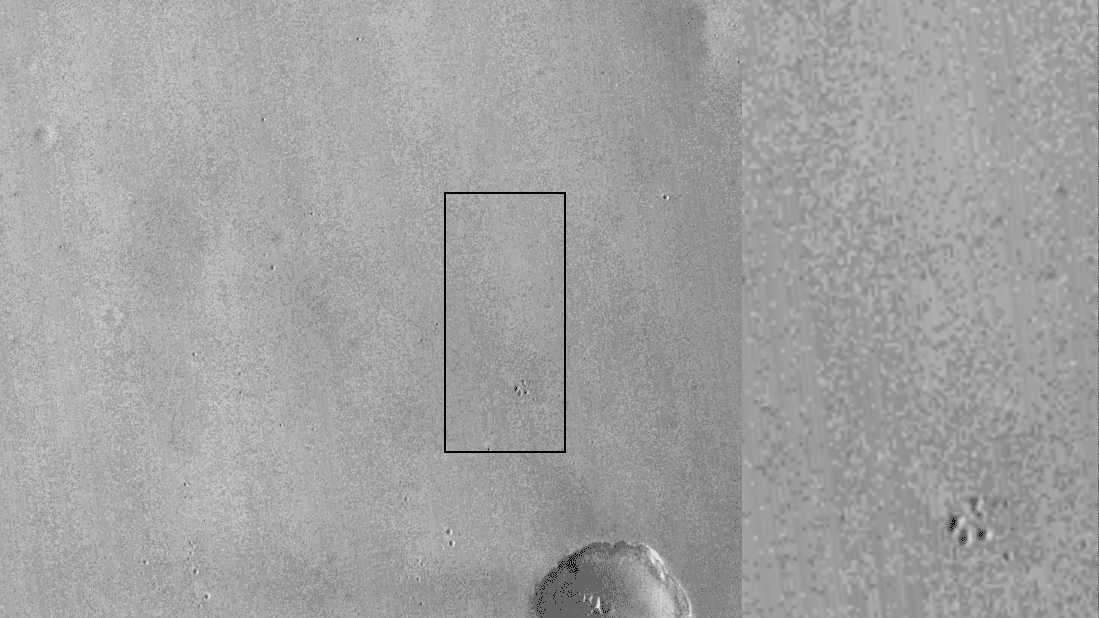
NASA / JPL - Caltech / MSSS
Camera on Mars Orbiter Shows Signs of Latest Mars Lander (Press Release)
NASA's Mars Reconnaissance Orbiter has identified new markings on the surface of the Red Planet that are believed to be related to Europe's Schiaparelli test lander, which arrived at Mars on Oct. 19.
The new image shows a bright spot that may be Schiaparelli's parachute, and a larger dark spot interpreted as resulting from the impact of the lander itself following a much longer free fall than planned, after thrusters switched off prematurely. It was taken by the Context Camera (CTX) on NASA's Mars Reconnaissance Orbiter and is available online, as a before-and-after comparison with an image from May 2016, at:
http://mars.nasa.gov/multimedia/images/?ImageID=8131
The location information gained from acquiring the CTX image will be used for imaging the site with the Mars Reconnaissance Orbiter's High Resolution Imaging Science Experiment (HiRISE) camera. European Space Agency (ESA) and NASA researchers will analyze the images for information about the sequence of events on Schiaparelli's landing day, possibly supplementing data transmitted from the test module during its descent.
The location of the bright spot interpreted as the parachute is 353.79 degrees east longitude, 2.07 degrees south latitude, closely matching ESA's calculation for the landing location based on landing-day data. This is within the planned landing area and about 3.3 miles (5.4 kilometers) west of the center of the landing target. A dark spot is larger and elliptical, approximately 50 by 130 feet (15 by 40 meters). It may be where the lander reached the surface and exposed darker ground.
The test lander is part of ESA's ExoMars 2016 mission, which placed the Trace Gas Orbiter into orbit around Mars on Oct. 19. The orbiter will investigate Mars' atmosphere and provide relay communications capability for landers and rovers on the surface.
With CTX, HiRISE and four other instruments, the Mars Reconnaissance Orbiter has been investigating Mars since 2006.
Malin Space Science Systems, San Diego, built and operates CTX. NASA's Jet Propulsion Laboratory, a division of Caltech in Pasadena, California, manages the Mars Reconnaissance Orbiter Project for NASA's Science Mission Directorate, Washington. Lockheed Martin Space Systems, Denver, built the orbiter and collaborates with JPL to operate it.
Source: Jet Propulsion Laboratory

No comments:
Post a Comment